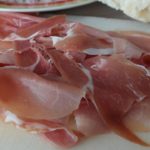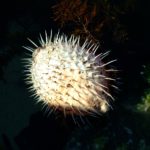What You Can Get From EU-Japan EPA(Economic Partnership Agreement)
What is EU-Japan EPA?
On February 1st ,2019, The Economic Partnership Agreement (EPA) between EU and Japan came into force.
This means that consumers, companies, and businesses both in EU and Japan can take advantage of the world’s largest open trade zone.
Those advantages include :
- We consumers can buy authentic foreign products for cheaper price
- Japanese companies can get into EU market easier and vice versa.
- Producers’ interests can be protected
Under this agreement, Geographic Indication (GI) is a key system to identify the products that originate one particular place where the quality and other characteristics are linked to the origin.
For example, “Parma Ham” and “Gorgonzola Cheese” have GI and Japan can now import them for cheaper price than before.






Therefore, we can say that only authentic and original products can have this GI.
More info about GI can be for d here : http://ec.europa.eu/trade/policy/accessing-markets/intellectual-property/geographical-indications/
From the perspective of Japanese brands and the companies/producers, this is a great chance to expand the brands in EU.
I want to introduce some of the cool Japanese stuff with GI that could be loved by people in EU.
Beef (“Wagyu”)



Japanese beef, known as wagyu, has already fans around the world. It has several different brands depending on the region where the feeding procedures differ.
8 brands of Japanese beef are registered in the GI, including the famous one called Kobe Beef. What I definitely recommend you to try is Matsusaka beef.
When I was in Tokyo last year with my Finnish workmate, we went to a beef restaurant with our customers. I will never forget the happy facial expression the Finnish workmate made when he tasted this Matsusaka beef.
It melts in your mouth while releasing the juice and the flavour. He even told me that it was probably the best food ever.
Blowfish (“Fugu”)
Blowfish (fugu in Japanese) might be a bit weird to eat for many foreigners. It is also knowns as fish that has very strong poison in some parts of the body.



Therefore, it has to be cooked by those who have a special license. Fugu is usually served as sashimi, hotpot or deep-fried.
The taste?
It is very hard to describe. You might need to try a couple times until you realise the simple but sophisticated taste.
If you get to eat blowfish at a fancy Japanese restaurant in Japan, you learn something new about this unique seafood for sure.
Sake



I don’t know if I need to explain sake since it’s already known by people around the world.
Thanks to this EPA, people in EU will have easier access to authentic Japanese sake for more reasonable price. Also, the fake brand can’t be named as sake any more.
Sake is good with not only with Japanese food (e.g. sushi) but also with European food. There is even a profession called “Sake sommelier” who distinguishes different sake brands and are able to suggest sake depending on the meal/cuisine.
I wonder how EU-Japan EPA shapes food culture in Europe and Japan.
When two different authentic food or drink interacts, it should create something surprising that brings the new charm of food culture.
Source:
Ministry of Agriculture, Forestry and Fisheries of Japan
http://www.maff.go.jp/j/shokusan/gi_act/designation2/attach/pdf/index-17.pdf
Ministry of Finance of Japan
https://www.mofa.go.jp/mofaj/files/000286938.pdf



